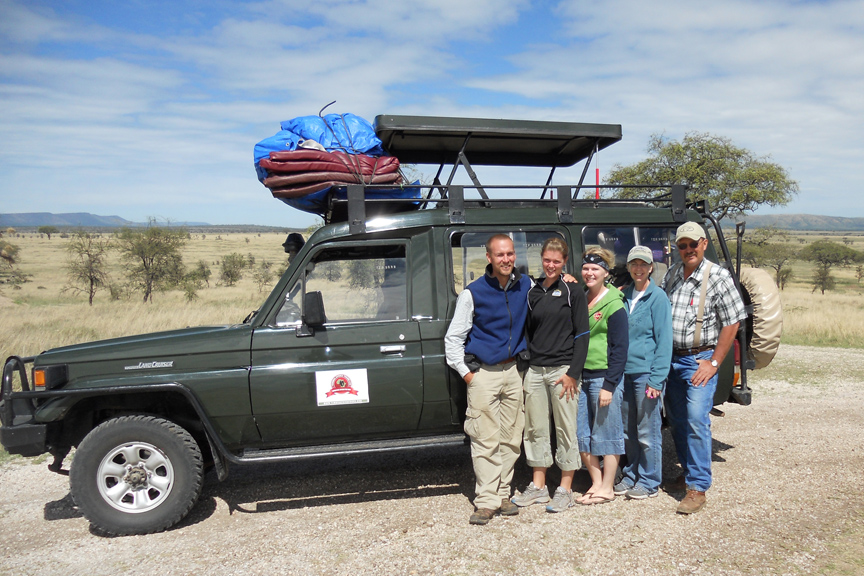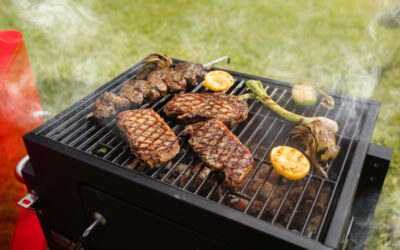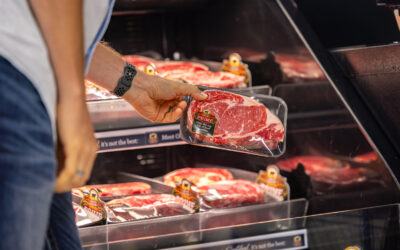The American farmer meet African agriculture
Ocotober 18, 2011

“What do you do with all your maize, Mr. Jeff?”
“Well, we feed it to our cattle,” the American farmer replied.
All 16 students erupted with laughter, clicking their tongues in disapproval.
“To your cows? You feed all your maize to your cows?! But then what do you eat?”
The idea of “sweet corn” for humans and “field corn” for cattle was as foreign to the students as the African bush was to Mr. Jeff. Western Nebraska’s the scenery he’s more accustomed to.
“How many tractors do you use on your farm in America, Mr. Jeff?”
“What do you use them for?”
“Do they look like this one?”
“Do you have to push yours down the hill to start it, too?”
Now it was his time to chuckle. Yes, there has been a time or two that an old tractor on his farm needed a push-start, too. But never a green one, he joked.
His preference to the green of a John Deere machine over the red of the old Massey Ferguson was lost on the students. In their third or fourth year in an English-speaking school, the students don’t always detect sarcasm in their third language.
But they don’t miss a beat in the catapult of questions.
Most of the students’ families make their living from the Tanzanian land, but few if any have access to machinery that doesn’t involve a mule. The fact that their agriculture teacher’s father-in-law,an American farmer who owns several of these machines himself,happens to be there to visit on the same day the tractor is displayed for their agriculture class is a learning opportunity they can’t resist.
Later, the American farmer’s daughter brings her family to the home of one of her students. The two daughters, teacher and student, follow their fathers on a walk through harvested corn fields.
Of course, one’s fields were harvested by hand, while the other’s await his return from half a world away to be harvested by machine. But around the globe, all farmers understand having a one-track mind when it comes time to harvest corn.
They quiz one another on how the other’s corn is stored, how it’s dried, when he’ll re-plant and how many buckets of seed equal how many buckets of harvest. There’s some figuring of how many Tanzanian buckets might equal an American bushel, and discussion on the worldly topic of weed control.
In the village on the other side of the school, another Tanzanian farmer talks cattle with the teacher’s father. One shares how his life has been built around the nomadic herding of these zebu-type cattle. The other relates how pastures are fenced in and grazing is rotated by American cattlemen.
Much is lost in translation, but the feel of the earth, their attachment to it and the animals sustained by it can’t be missed. Most interestingly, however, is how the seemingly simple questions volleyed between students, farmers and cattlemen creates a breeding ground for self-examination.
A simple explanation to students on how we use ear tags to identify cattle in America led to discussions of electronic ID, age-and-source verification and the collection of individual performance data around our campfire later. The relationship between corn and cattle that was so foreign to the students at my sister and brother-in-law’s school created room for us to discuss the oddities and intricacies of the two commodity’s value to our cattle business and how to best deal with it.
My family traveled to east Africa this month to visit my sister and brother-in-law, who have been working as teachers there for the past year. Farm and ranch talk was inevitable, and the family “vacation” was filled with conversations about agriculture between farm visits and safari journeys.
It was quite the experience, full of interesting insights and a greatly renewed appreciation for the modern agriculture system we have in America today. We explained over and over again that farming in America isn’t just about raising enough food to sustain your own family like it is there. One American farmer much grow enough crops and livestock to feed many, many more people than just themselves.
I, for one, have said many little prayers of gratitude that we have the modern agriculture systems we do today since that trip. And I think Mr. Jeff has too.
Until next time,
-Laura
Progress, Not Complacency
Beef demand has been exceptional because of dramatic increases in consumer satisfaction for a few decades. Since taste ranks at the top of the list when it comes to what drives consumers to choose beef, we know where our figurative “bread is buttered.”
Cutout and Quality Strong
Summer weather has begun to set in with more regions of the country set to experience hotter temperatures. This means the traditional turning of consumer focus toward hamburgers and hot dogs rather than steaks, the spring favorite.
CAB Sets Sales Records, Sees Historically High Brand Acceptance Rates
In an otherwise tough time in the beef business, sales and supply records have been a bright spot. The positive numbers mean that quality beef production has not let up, and beef demand is holding. Consumers have proven the value proposition: the good stuff is worth a little more money, for a better eating experience.








